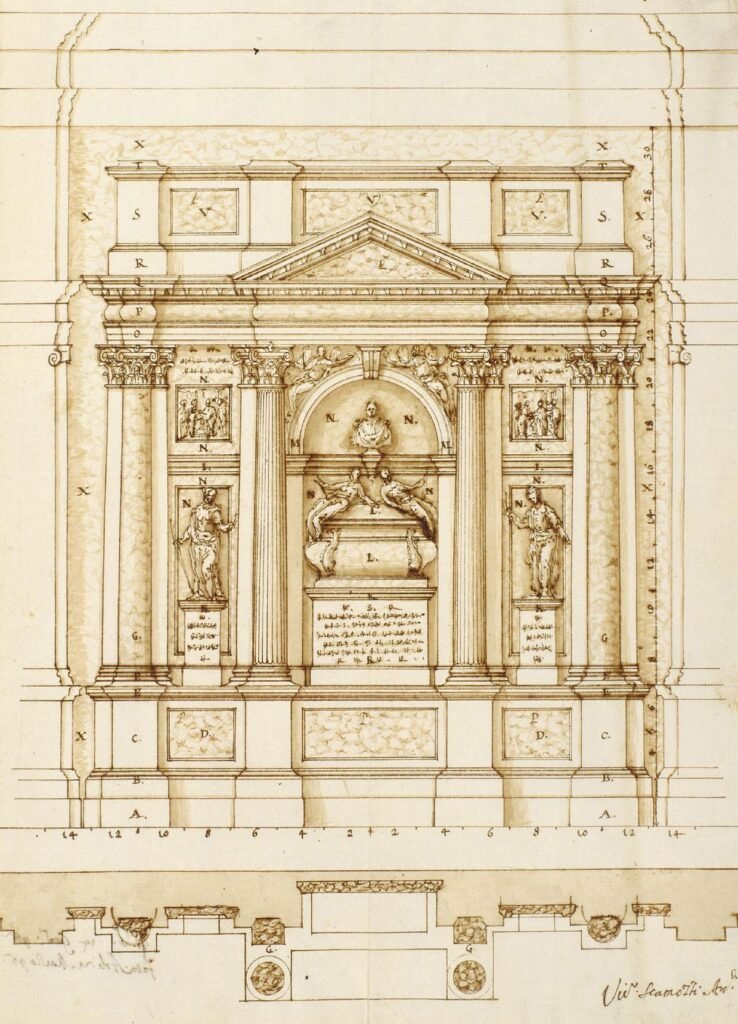In the field of architecture, the mutually beneficial link between form and function is the basis for both innovative design and useful functionality. Let’s known the link between Art and Architecture and Explore the Relationship Between Form and Function in the fields of , interior design, urban design, and education.
Understanding Form and Function
Defining Form in Architecture
In architecture, form encompasses the aesthetic and visual characteristics of a structure, shaping its overall appearance and style. This concept includes the shape, design, and spatial arrangement of buildings, playing a pivotal role in defining the personality and character of a given area.
Beyond mere outward beauty, architectural form embodies a deeper resonance, reflecting the cultural, historical, and environmental context in which a building exists. It captures the essence of an era, conveys cultural narratives, and responds to the surrounding natural and built environment.
Thus, form is not only about visual appeal but also about the meaningful integration of a building within its broader socio-cultural and ecological landscape. This holistic approach ensures that architecture contributes to a sense of place, identity, and continuity within a community.
Decoding Function in Architecture
In contrast, the concept of function pertains to the practical use and objectives of a structure. Beyond its aesthetic appeal, a building must efficiently fulfill its intended role. This includes considerations of usability, accessibility, and the needs of its occupants or users.
For instance, a residential building must provide comfortable living spaces, while an office building should facilitate productivity and collaboration. The seamless integration of form and function is crucial, as it ensures that architectural designs are not only visually striking but also practical, user-friendly, and responsive to the environment and context in which they exist.
This holistic approach to architecture enhances both the experience of the users and the longevity of the structure.
The Symbiosis of Form and Function
Achieving Harmony
Successful architectural projects achieve a harmonious relationship between form and function, where each design element enhances the other. Striking this delicate balance is crucial, as design choices should improve functionality rather than compromise it.
Renowned architects like Zaha Hadid and Frank Lloyd Wright exemplify this synergy through their iconic works. Hadid’s fluid, organic forms and Wright’s integration of structures with their natural surroundings demonstrate that aesthetics and practicality can coexist seamlessly. Their designs not only meet functional requirements, but also inspire and elevate the human experience. This proved that beauty and utility are not mutually exclusive but can indeed flourish together.
Interior Design: Melding Aesthetics and Utility
Harmonizing Spaces
Interior design, while operating on a more intimate scale, adheres to the foundational principles of architecture, specifically those of form and function. The challenge lies in crafting aesthetically pleasing interiors that seamlessly enhance and support the intended use of the space.
This intricate balance requires a keen eye for detail and an understanding of how design elements interact to create a cohesive environment. Students interested in delving into the multifaceted world of interior design can gain invaluable insights by examining detailed case studies.
One notable example is the renovation of the Islamic Art galleries at the Louvre, which showcases the interplay of historical reverence, cultural sensitivity, and modern design techniques. Such projects highlight the critical thinking and creativity needed to transform spaces into functional works of art.

Urban Design: Shaping Communities
Creating Livable Spaces
By concentrating on the structure and arrangement of entire communities, urban design broadens the conversation to a macro level. Analyzing examples like the redesign of New York City’s High Line offers insights into how urban designers manage the intricate relationship between form and function to improve the quality of urban living.
Case Studies in Architectural Design
1. Fallingwater by Frank Lloyd Wright
Fallingwater, an architectural masterpiece set in a tranquil Pennsylvania landscape, demonstrates the mastery of Frank Lloyd Wright. The organic form of the house reflects the natural environment, while its cantilevered structure exemplifies a bold combination of aesthetics and design. Architects can think through design choices to understand how form and function combine to create a lasting work of art.
2. The Guggenheim Museum by Frank Gehry
Frank Gehry’s Guggenheim Museum in Bilbao is a testament to the transformative power of architectural design. The unusual shape of the museum not only attracts attention, but it also fulfills the functional requirements of a contemporary art space. By studying this case study, students can explore the architect’s decision-making process.
Education in Architecture: Nurturing Future Innovators
Promoting a Comprehensive Perspective
One of the most important factors influencing how architecture develops in the future is education. It is imperative to integrate a comprehensive methodology that blends academic understanding with practical design expertise. Encouraging architecture students to engage in comprehensive case studies can help them understand the intricacies of real-world projects.

The Significance of Architectural Case Studies
Architecture students can learn a great deal from case studies. Students can gain insight into the decision-making process of architects. Gain an understanding of the difficulties they encounter. And find inspiration for their own designs by analyzing existing structures. A greater comprehension of the symbiotic relationship between form and function is fostered by this practical approach.
An Appeal for Aspiring Architects
Aspiring urban planners, interior designers, and architects are at the forefront of a dynamic field. Where form and function come together to create the environment we live in. Studying the great works of the past is simply one aspect of the journey. Another is actively participating in the present through case studies of architecture. Take on the task of understanding the complex dance between form and function. That is the true spirit of architectural innovation.
Set off on your scholastic path with a dedication to comprehensive study, and let the ideas of form and function to direct your artistic pursuits. The world is looking forward to the next wave of architects who will create a lasting impression on the built environment by skillfully fusing aesthetic expression with functional utility.



